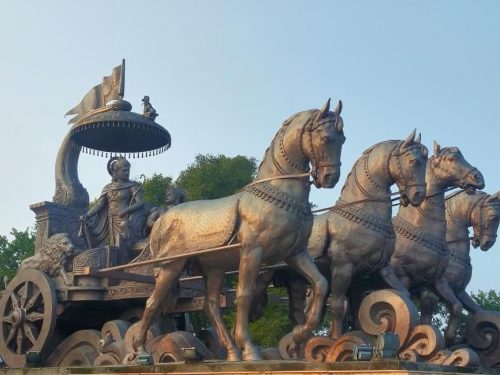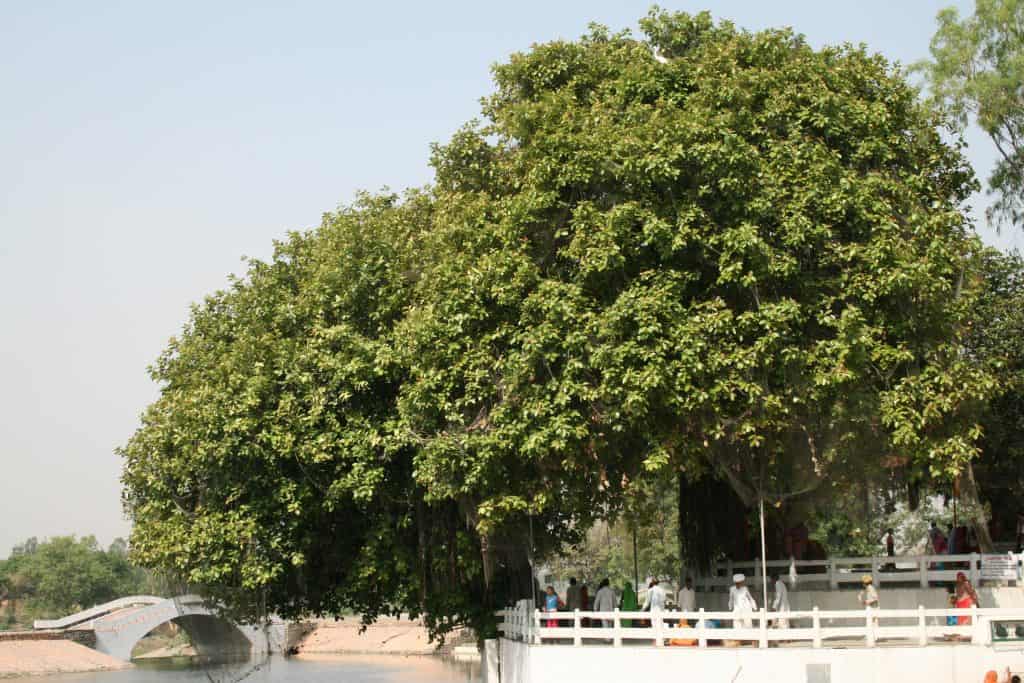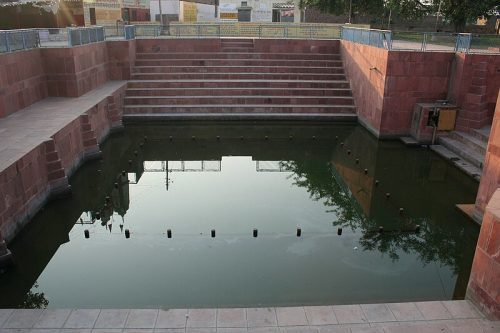In today’s fast-paced world, where stress feels like a constant companion, Kurukshetra is the ultimate escape. Here is a place where history and spirituality blend – where the whispers of ancient wisdom allow you to reset and reconnect with your inner self.

This sacred land, echoing the epic Mahabharata, invites you to escape the chaos and find tranquillity in its timeless wisdom. Often recognized as the legendary battlefield where the Bhagavad Gita was spoken, Kurukshetra offers a sanctuary for those seeking a spiritual retreat. Ready for a journey to serenity? Kurukshetra is calling!
Kurukshetra offers an enriching experience for seekers and travellers alike. Known for being the battlefield of the epic Mahabharata and the birthplace of the Bhagavad Gita’s timeless wisdom, this ancient city is a spiritual hub that invites exploration beyond the ordinary. Let’s begin our visit to Kurukshetra by understanding the fascinating history that makes this place so sacred and revered. The history of this region dates back thousands of years, intertwined with tales of valour, righteousness, and cosmic duty.
According to Hindu mythology, the area was named after King Kuru, a forefather of the Pandavas and Kauravas, who performed great penance here, turning Kurukshetra into a land of immense spiritual significance. Over the centuries, the city has witnessed countless pilgrimages and remains a focal point of devotion, attracting those seeking inner peace and divine knowledge.
Today, its sacred ponds, temples, and historical landmarks offer visitors a deep connection to the past and the spiritual wisdom embedded in the land.
Kurukshetra, the Dharmakshetra – the history of the land
Kurukshetra was the head of the region under the Kuru empire called the “Brahmavarta” or the home of Brahma. This sacred land, located between the ancient Saraswati and Drishadvati rivers, held immense religious and historical significance. It was here that Bharata, the predecessor of the Kuru dynasty, established his capital, and where the holy Vedas were composed. As the head of this revered region, Kurukshetra was regarded with the utmost respect.
However, by the time of the Mahabharata, the once densely populated area had begun to see a decline as the Saraswati and Drishadvati rivers started to dry up, leading to a thinning of populations, especially in cities located near the lower river channels.
Dhritarashtra later divided the Kuru kingdom between the Pandavas and Kauravas, with the territory east of the Yamuna and west of the Ganga going to Duryodhana and the Kauravas, while the Pandavas were granted the land between the west of the Yamuna and east of the Drishadvati.
Since Brahmavarta was considered sacred to both factions, it remained neutral during their conflict. Even after losing their territories in the game of dice, the Pandavas eventually reclaimed their former lands, including major cities and villages located between the west of the Yamuna and east of the Drishadvati.
Here are some of the sacred sites in Kurukshetra that trace back to the epic Mahabharata. Let’s take a closer look at each one to give you a deeper understanding of that yuga (time).
Jyotisar – The Birthplace of the Bhagavad Gita
Jyotisar, located on the banks of the Jyotisar Sarovar in Kurukshetra, Haryana, holds immense significance in Indian mythology. Even before the Mahabharata war, Kurukshetra was considered a sacred land, which is why Lord Krishna chose this place to guide the forces of dharma in the battle. It was here that Lord Krishna delivered the Bhagavad Gita to Arjuna, an event celebrated annually as Gita Jayanti on the Shukla Ekadashi (11th day of the waxing moon) in the month of Margashirsha.

During this time, the Gita Deepotsav is celebrated with thousands of lamps illuminating the sacred banks of Brahma Sarovar, Sannihit Sarovar, and Jyotisar Sarovar. The name ‘Jyotisar’ is a combination of “Jyoti,” meaning light of knowledge, and “Sar,” meaning essence. It represents the essence of wisdom from the Vedas, Upanishads, and Puranas, all distilled in the Bhagavad Gita, which continues to bring spiritual enlightenment to people’s lives. It was here that the essence of the Bhagavad Gita was conveyed to Arjuna through the timeless shloka:
”यदा यदा ही धर्मस्य ग्लानिर्भवति भारत I अभ्युत्थानमधर्मस्य तदात्मानम सृज्याहम।।”
Translated as: “Whenever there is a decline in righteousness (dharma) and an increase in unrighteousness (adharma), O Bharata (Arjuna), at that time, I manifest Myself on earth.”
In this verse, Lord Krishna promises that whenever evil rises and righteousness wanes, He incarnates to restore balance and protect the virtuous.
At Jyotisar, visitors can witness the spot where it is believed Lord Krishna spoke the Gita under the ancient Akshaya Vata (banyan tree). This sacred tree, known as the ‘Gitopadesha Sthala,’ is marked to honour its legendary significance. Pilgrims often visit to pay respects, and a sculpture of Krishna’s chariot stands nearby, symbolizing the divine conversation between Krishna and Arjuna. The Haryana tourism department also hosts a captivating light and sound show, reenacting this profound moment each evening.
Brahma Sarovar – The Ancient Sacred Water Body
Brahma Sarovar is one of the most prominent tourist attractions in Kurukshetra. While this site is not solely famous for the Mahabharata battle, it is renowned for various fascinating events that have taken place here. Located in Thanesar, Kurukshetra, Brahma Sarovar is a sacred man-made reservoir, the largest of its kind in Asia, measuring 3,600 feet in length, 1,500 feet in width, and 45 feet in depth.
In Hinduism, bathing holds great significance for both internal and external purification, and many religious sites feature water pools or sarovars near temples and gurdwaras. The Hindu genealogy registers of Kurukshetra are preserved here. According to legend, Lord Brahma created the universe from this holy land after performing a grand yajna, which is why the place is named Brahma Sarovar.
During the final days of the Mahabharata war, Duryodhana hid underwater in this reservoir to escape Bhima. There is also a spot where Draupadi washed her hair with Dushasana’s blood.
Local beliefs suggest that the reservoir was first renovated by King Kuru. In the centre of the lake is Sarveswar Mahadev Temple, dedicated to Lord Shiva, where it is believed that the Shivalinga manifested itself. According to the Mahabharata, the Pandavas were absolved of their sins by bathing in the lake during the war. A grand fair is held here during solar eclipses, drawing millions of devotees who take a holy dip in the waters of Brahma Sarovar.
Bhishma Kund – The Final Resting Place of Bhishma
Bhishma Kund, a stepwell named after Bhishma Pitamaha, is believed to be the spot where he lay on a bed of arrows, crafted by his grandson Arjuna. This site in Kurukshetra holds a deep connection to the epic Mahabharata. Bhishma was revered by both the Pandavas and Kauravas, and according to legend, he possessed a boon that allowed him to choose the moment of his death. After being wounded in battle, Bhishma came here to rest and observe the ongoing conflict.
As the story goes, while lying here, he grew thirsty and requested water. To quench his thirst, Arjuna shot an arrow into the ground, releasing a stream of water that formed Bhishma Kund. This site also features a temple and remains a popular destination for visitors drawn by its historical and mythological significance.

Bhishma Kund, located in Narakatari village near Kurukshetra, is a holy place linked to the Mahabharata battle. It is said that on the 10th day of the battle, Bhishma, after being wounded, asked for water. In response, his grandson Arjuna shot his Parjanyastra arrow into the earth, causing a fountain of water to emerge and quench Bhishma’s thirst. Today, this sacred kund continues to attract tourists and pilgrims alike.
Sannihit Sarovar – The Confluence of Seven Sacred Rivers
Located on the outskirts of Kurukshetra, this sacred water reservoir is believed to be the convergence point of the seven tributaries of the now-vanished Saraswati River. According to legend, the Sarovar is the eternal abode of Lord Vishnu. Local lore holds that on the night of a new moon, the sanctity of all pilgrimage sites, or Tirthas, gathers here. It is said that performing shradh, a memorial prayer for ancestors, during a solar eclipse and bathing in the tank grants the merit equivalent to a thousand Ashwamedh sacrifices, an ancient Vedic ritual signifying a king’s sovereignty.
This draws pilgrims to the Sarovar during solar eclipses. Local priests, known for maintaining records of countless pilgrims, assist visitors in tracing their ancestry. Bathing in the holy waters is believed to bring peace to wandering souls. The Sarovar is surrounded by numerous shrines dedicated to revered deities, attracting Hindu devotees from India and abroad to perform Pind Daan, a ritual honouring departed souls.
Sannihit Sarovar, located two kilometres west of the Kurukshetra Railway Station, spans 1,500 by 450 feet. The name Sannihit reflects the belief that the holy water houses Lord Vishnu. The marble and red stone ghats lead to the sacred water, making it a significant site for performing Pind Daan.
Devotees from far and wide come to pay homage to the spirits of their deceased relatives. During solar and lunar eclipses, a dip in Sannihit Sarovar is considered especially auspicious, drawing large crowds. Festivals such as Somvati Amavasya, Solar Eclipse, and Deepavali witness a surge of devotees at this sacred site.
The Bhadrakali Temple – The Mother Goddess’ Blessings
Bhadrakali Temple is located on Jhansa Road in Thanesar, Kurukshetra district, and is dedicated to Bhadrakali, a form of Shakti. Recognized as one of the 51 Shakti Peethas of India, the temple is believed to mark the spot where an anklet of Sati fell into a well. This legend is symbolized by a marble ankle displayed at the site, recalling the myth of Sati.
It is said that the Pandavas, along with Lord Krishna, worshipped Goddess Durga here before the Mahabharata battle and returned to pay homage after their victory. As a tradition that started then, they offered their horses in service to the goddess. Today, devotees offer terracotta and metal horses to the deity as a token of gratitude when their prayers are answered. The temple is also believed to have hosted the ‘mundan’ (hair-cutting) ceremony of Sri Krishna and Balram.
Dedicated to Goddess Kali, the temple highlights her many incarnations and holds great spiritual significance. It is constructed from red sandstone and shines brilliantly during Navratri celebrations. According to legend, the Pandavas, before heading into battle, prayed here for victory, offering their chariot horses, a tradition that continues with pilgrims offering horses made from silver, mud, or other materials based on their means. The temple remains a revered site, especially for those offering terracotta horses as a symbol of devotion.
The Sri Krishna Museum – Preserving the Mahabharata Legacy
The popular Krishna Museum in Kurukshetra, established in 1987 by the Kurukshetra Development Board, showcases the city’s rich history. The museum is dedicated to themes centred around Shri Krishna, the Mahabharata, and Kurukshetra, offering a glimpse into the region’s ancient legacy.
These themes are vividly brought to life in the museum’s galleries, displaying rare artefacts such as pottery, miniature paintings, sculptures, terracotta items, palm leaf etchings, ivory and bronze castings, and tableaux related to these historical events. Lord Krishna is depicted in various roles – as a war hero, philosopher, divine incarnation, godhead, benevolent lover, and master statesman. The museum also features an impressive collection of folk art in Madhubani, Kangra, and Pattachitra styles, captivating visitors with their beauty.
The museum’s recently added third block delves into the values and teachings of great figures like Lord Krishna, Vidur, Bhishma, and other prophets associated with the sacred land of Kurukshetra. A multimedia show, highly popular among both locals and tourists, offers an immersive experience, captivating visitors through significant historical events.
Kurukshetra offers a unique blend of mythology and history, making it a must-visit for those fascinated by India’s ancient past. The city’s deep connection with the Mahabharata is evident in its numerous sacred sites, from Jyotisar, where Lord Krishna delivered the Bhagavad Gita, to Brahma Sarovar and Bhishma Kund, each holding timeless spiritual significance. Beyond its religious heritage, Kurukshetra also preserves India’s cultural and historical legacy through its museums and festivals.
Visitors to this ancient land explore its historic battlefields and connect with the enduring teachings of dharma and the essence of Indian spirituality.
FAQs:
What is the significance of Kurukshetra in Hinduism? Kurukshetra is revered as the battlefield of the Mahabharata, where Lord Krishna delivered the Bhagavad Gita to Arjuna. It is considered a sacred land of dharma (righteousness) and spiritual enlightenment, attracting pilgrims seeking peace and wisdom.
Which are the most important places to visit in Kurukshetra related to the Mahabharata? Key sites include Brahma Sarovar, a sacred water tank; Jyotisar, the spot where Krishna delivered the Bhagavad Gita; Kurukshetra Panorama & Science Centre, which depicts scenes from the Mahabharata; Bhishma Kund, and Sannihit Sarovar, where it is believed all holy waters converge.
Are there any festivals celebrated in Kurukshetra related to the Mahabharata? Yes, Geeta Jayanti is the most prominent festival, celebrating the day Lord Krishna delivered the Bhagavad Gita. It features spiritual gatherings, recitations, and cultural performances across Kurukshetra.
What is the best time to visit Kurukshetra? The best time to visit is between October and March, when the weather is pleasant, and festivals like Geeta Jayanti are celebrated.
How can one reach Kurukshetra? Kurukshetra is well-connected by road and rail. It is located about 160 km from Delhi and can be easily accessed by trains or buses. The nearest airport is in Chandigarh, about 90 km away.
Read more: Latest



